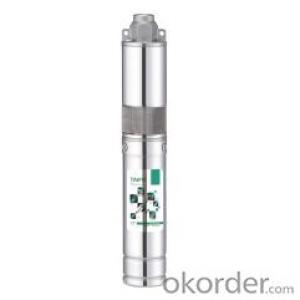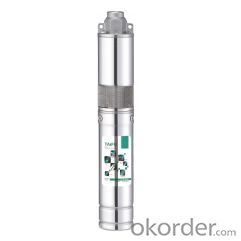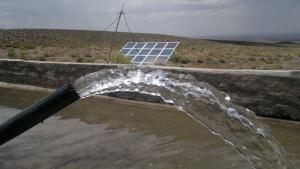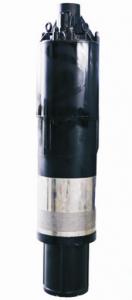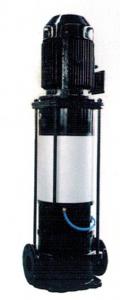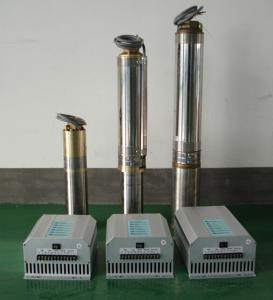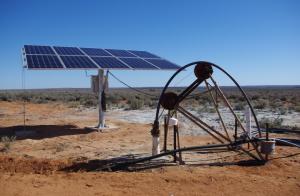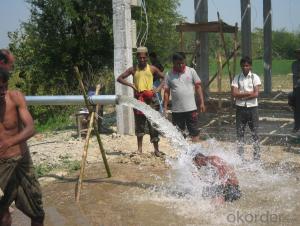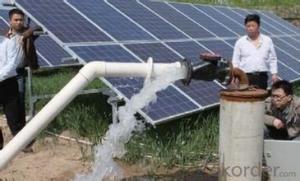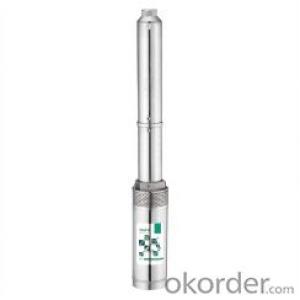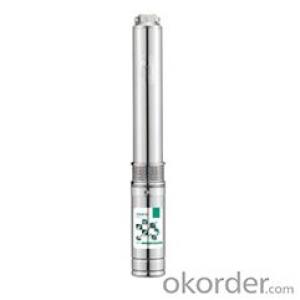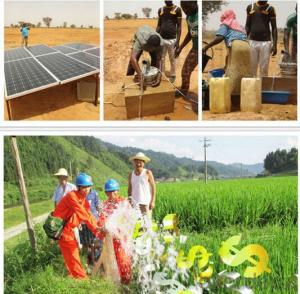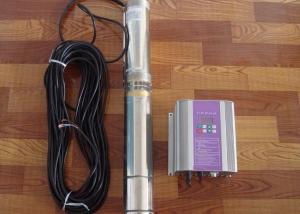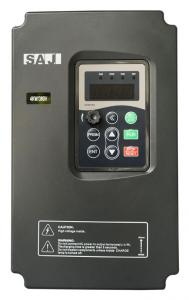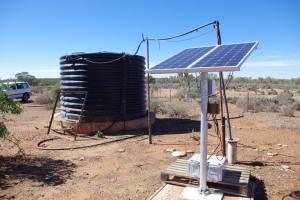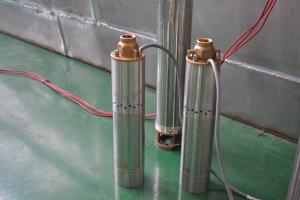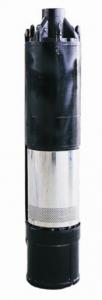Aquascape Solar Pump 3tss/4tss Stainless Steel CE Solar Panel
- Loading Port:
- Shanghai
- Payment Terms:
- TT OR LC
- Min Order Qty:
- 50 pc
- Supply Capability:
- 100000 pc/month
OKorder Service Pledge
OKorder Financial Service
You Might Also Like
1.APPLICATION AREA:This project products are mainly used in dry region for irrigation of agriculture, It can be used for drinking water and
living water. The living condition could be much improved. It also can be used for fountains.2.MATERIAL OF PARTS:Outlet: stainless steel
Pump body: stainless steel
Motor body: stainless steel
Bearing: C&U
3.ADVANCED TECHNOLOGY:1.Application innovation
Compared with the traditional alternating current machine, the efficiency is improved 25% by the permanent magnetism, direct current, brushless, non-sensor motor.
2.Technics innovation
Adopt double plastic package for rotor and stator, motor insulation≥300MΩ, the motor security was much improved.
3.Structure innovation
Oil filling, convenient installation and environmental protection4.HIGHLIGHTSa.Energy-saving and environment-protected green products
b.High technique products adopting MPPT and DSP chip technique.
c.100% copper wire, cold-rolled silicon steel sheet
d.CE certificate
e.Advanced three phase brushless DC motor
f.Stainless steel 316 screws
g.3 years warranty5.PRINCIPLE OF OPERATION:Solar panel collects sunlight→DC electricity energy → solar controller(rectification,stabilization,amplification,filtering)→available DC electricity→(charge the batteries)→pumping water6.ADVANTAGES OF SOLAR PUMP SYSTEM:A.It is easier and more widely used than any other dynamoelectric driven pumps.
B.It is more economical and more environmentally friendly.7.MODEL SELECTION:a.The power of solar panel = power of pump ×1.3
The voltage of solar panel = the voltage of pump
The controller should be matched
b.Select the batteries according to the following formulas:
The use hour of battery =
The battery capacity ÷(the machine power÷the battery voltage)×0.6 For example,the machine power is 200W, the battery
capacity is 100AH,the voltage is 12V,and the battery is fully charged,then the use hour is:100÷(200÷12)×0.6=3.6hours
c.The battery capacity=
the use hour ÷0.6×(the machine power÷the battery voltage) For example,the machine power is 200W,the battery voltage
is 12V,and the battery need to be used for 3.6hours,then the battery capacity is:3.6÷0.6×(200÷12)=100AH

- Q: Can a solar pump be used for irrigation in hilly or sloping terrains?
- Yes, a solar pump can be used for irrigation in hilly or sloping terrains. Solar pumps are versatile and can be installed in various locations, including hilly or sloping terrains. These pumps use solar energy to power them, which means they do not require a connection to the grid or fuel to operate. This makes them highly suitable for remote and challenging terrains. Additionally, solar pumps can be installed at different levels to cater to the varying terrain, ensuring efficient water distribution across the slope. They can provide a sustainable and environmentally friendly solution for irrigation needs in such terrains, reducing the reliance on conventional energy sources and minimizing the carbon footprint.
- Q: Can solar pumps be used for water supply in greenhouses or nurseries?
- Yes, solar pumps can indeed be used for water supply in greenhouses or nurseries. Solar-powered pumps are an environmentally friendly and cost-effective solution for providing water to plants in these settings. They utilize solar energy to power the pumps, eliminating the need for grid electricity and reducing operational costs. Additionally, solar pumps can be easily installed and require minimal maintenance, making them a practical choice for water supply in greenhouses and nurseries.
- Q: Can solar pumps be used in conjunction with other renewable energy sources?
- Yes, solar pumps can be used in conjunction with other renewable energy sources. Solar pumps are typically powered by solar panels, which convert sunlight into electricity. However, it is possible to combine them with other renewable energy sources like wind turbines or hydroelectric systems. This way, the pumps can still operate during cloudy days or when there is less sunlight available, ensuring a reliable and continuous water supply.
- Q: Can a solar pump be used in greenhouses?
- Indeed, greenhouses can make use of solar pumps. Solar pumps prove to be an excellent choice for irrigation systems in greenhouses due to their reliance on renewable and eco-friendly solar energy. Their purpose extends beyond efficiently watering plants, as they are also able to supply nutrients and uphold ideal moisture levels within the greenhouse. By eliminating the necessity for electricity or fuel, solar pumps effectively curtail greenhouse gas emissions and lower operational expenses. Furthermore, their seamless integration into existing greenhouse systems renders them a viable and pragmatic solution for sustainable agriculture.
- Q: How do I choose the right size solar pump for my needs?
- Choosing the right size solar pump for your needs depends on several factors that you should consider. Here are some steps to help you make an informed decision: 1. Determine your water requirements: Start by assessing the amount of water you need the solar pump to deliver. Consider factors like the size of your water feature, the depth of the water source, and the flow rate required for your specific application. This will help you establish a baseline for the pump's capacity. 2. Evaluate the pump's flow rate: The flow rate of a solar pump is typically measured in gallons per hour (GPH) or liters per hour (LPH). Ensure that the pump you choose has a flow rate sufficient to meet your water requirements. It is better to select a pump that exceeds your needs slightly to account for any fluctuations or future expansion of your water feature. 3. Consider the lift height: The lift height, also known as the pump's head, refers to the vertical distance the pump needs to push the water. If your water source is located at a higher elevation or if you plan to pump water to a higher point, you will need a pump with a higher lift height capability. Ensure that the pump you choose can handle the height you require. 4. Assess the solar panel capacity: Solar pumps are powered by solar panels, so it is crucial to consider the capacity of the panels in relation to the pump's power requirements. Make sure the solar panels can generate enough electricity to run the pump efficiently. Consider factors like the pump's voltage, current requirements, and the solar panel's wattage and voltage output to ensure compatibility. 5. Take into account sunlight availability: The amount of sunlight your location receives is an important factor when choosing a solar pump. If you live in an area with limited sunlight, you may need a larger solar panel or a pump with a backup battery system to ensure continuous operation during cloudy days. 6. Read product specifications and reviews: Once you have narrowed down your options, carefully read the product specifications for each pump you are considering. Look for information on features, warranties, and customer reviews to ensure that the pump meets your specific needs and is reliable. By considering factors such as water requirements, flow rate, lift height, solar panel capacity, sunlight availability, and product specifications, you can choose the right size solar pump that will effectively meet your needs. It is always recommended to consult with a professional or a reputable supplier for guidance based on your specific circumstances.
- Q: Can a solar pump be used for water supply in schools or community centers?
- Yes, a solar pump can be effectively used for water supply in schools or community centers. Solar pumps are ideal for remote or off-grid locations where access to electricity is limited. They use solar energy to power the pump, which means they are cost-effective and environmentally friendly. Solar pumps can provide a reliable and sustainable water supply, making them an excellent choice for schools or community centers.
- Q: Can a solar pump be used in areas prone to flooding?
- Certainly, areas that are prone to flooding can utilize a solar pump. These pumps are specifically engineered to endure various environmental challenges, such as flooding, due to their weather-resistant design. They are often constructed using waterproof and corrosion-resistant materials, enabling them to remain fully operational even in the face of heavy rainfall or flooding. Moreover, solar pumps are not reliant on electricity grids, which renders them a dependable source of water supply during emergencies or natural calamities. Nevertheless, it is crucial to place the solar panels in elevated locations to safeguard against flood-related damage and uphold their efficiency.
- Q: Are solar pumps suitable for use in botanical research centers?
- Yes, solar pumps are suitable for use in botanical research centers. They are environmentally friendly, cost-effective, and can provide a reliable source of water for irrigation, hydroponic systems, and other research purposes. Additionally, solar pumps can be easily integrated into existing infrastructure and require minimal maintenance, making them a practical choice for botanical research centers.
- Q: Can solar pumps be used in both shallow and deep wells?
- Yes, solar pumps can be used in both shallow and deep wells. However, the type and capacity of the solar pump required may vary depending on the depth of the well.
- Q: Can a solar pump be used for water supply in remote areas?
- Yes, a solar pump can definitely be used for water supply in remote areas. Solar pumps are a great solution for areas that lack access to grid electricity or where grid power is unreliable. These pumps are powered by solar energy, which makes them highly cost-effective and environmentally friendly. Solar pumps work by converting sunlight into electricity through photovoltaic (PV) panels. This electricity is then used to power the pump, which draws water from a source such as a well, river, or reservoir. The water can then be stored in tanks or distributed directly to the intended areas for various purposes like drinking, irrigation, or livestock. The use of solar pumps in remote areas has numerous advantages. Firstly, they reduce the dependence on traditional fuel-powered pumps, thus eliminating the need for fuel transportation and reducing carbon emissions. Secondly, solar pumps do not require extensive maintenance and are generally more reliable than fuel-powered pumps. They also have a longer lifespan, resulting in lower operational costs and increased efficiency. Furthermore, solar pumps can be easily installed in remote areas without the need for complex infrastructure. This makes them an ideal solution for regions where conventional electricity supply is not available or not feasible. Additionally, solar pumps can be designed to operate even in low-light conditions, ensuring a continuous water supply despite varying weather conditions. In conclusion, solar pumps are a viable and efficient option for water supply in remote areas. They provide a sustainable and reliable source of water while reducing operational costs and environmental impact. The use of solar pumps in these areas can greatly improve access to clean water and contribute to the overall development and well-being of the communities.
Send your message to us
Aquascape Solar Pump 3tss/4tss Stainless Steel CE Solar Panel
- Loading Port:
- Shanghai
- Payment Terms:
- TT OR LC
- Min Order Qty:
- 50 pc
- Supply Capability:
- 100000 pc/month
OKorder Service Pledge
OKorder Financial Service
Similar products
Hot products
Hot Searches
Related keywords
